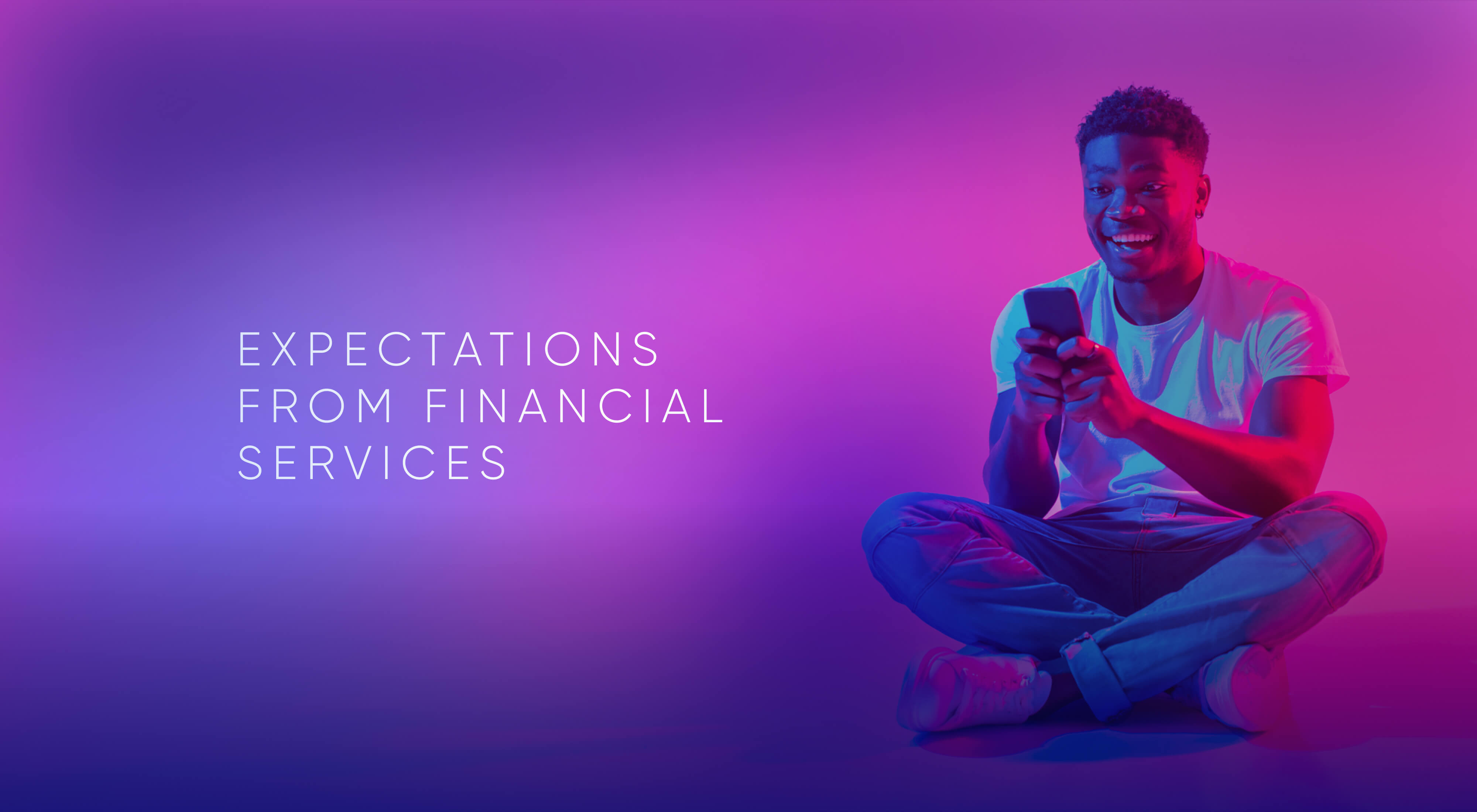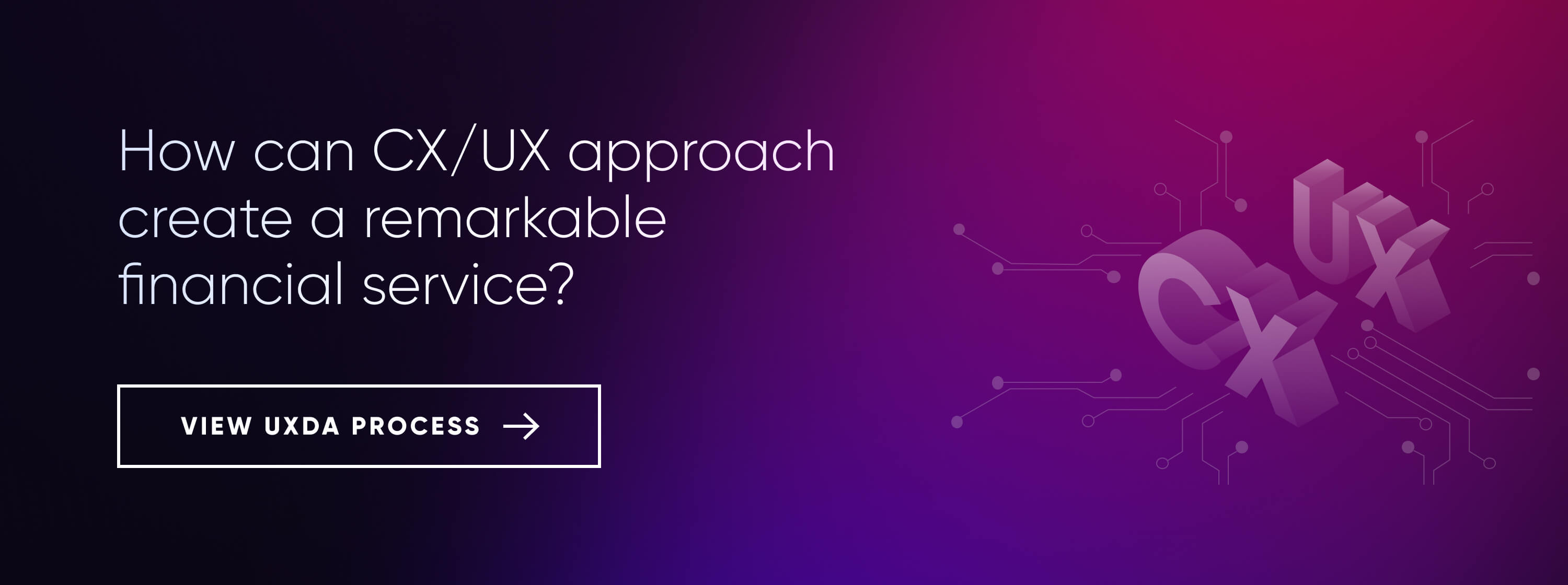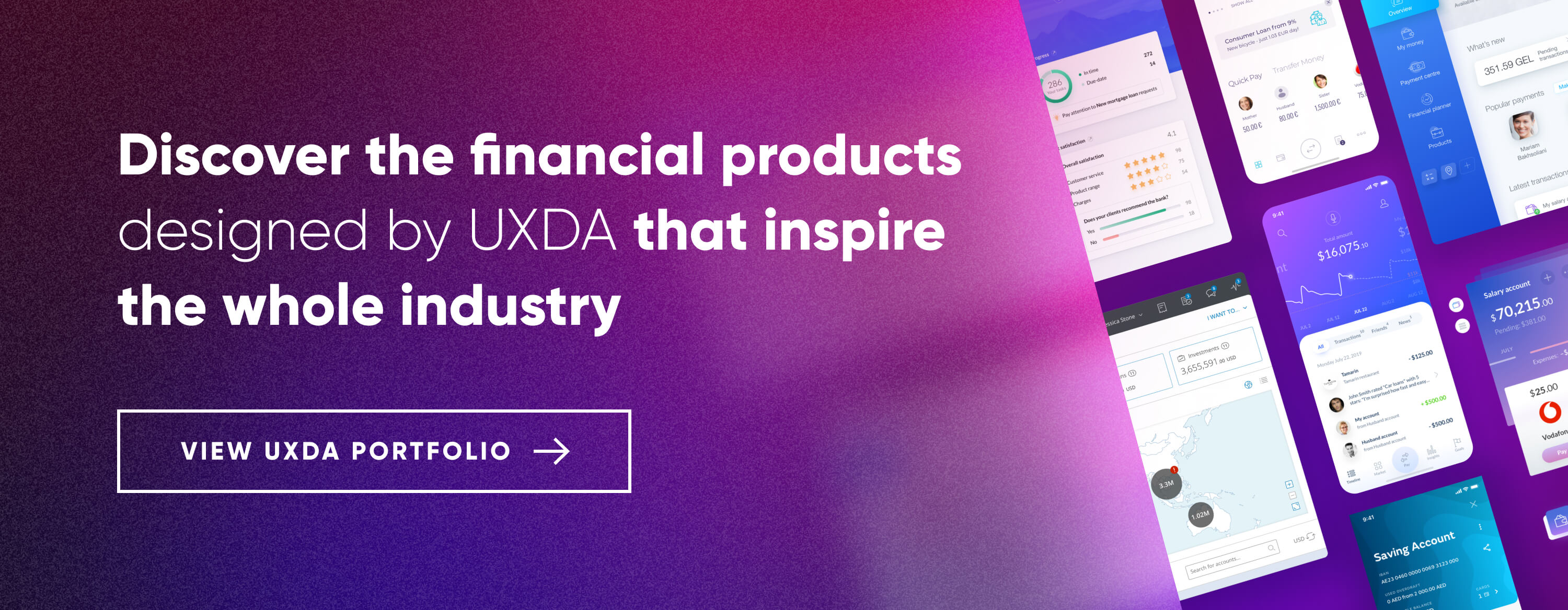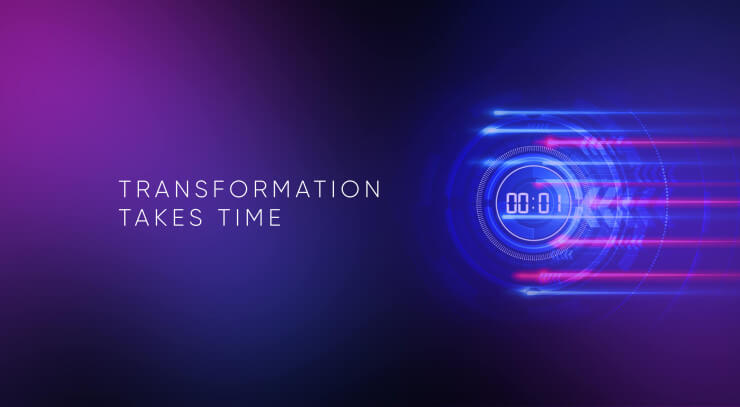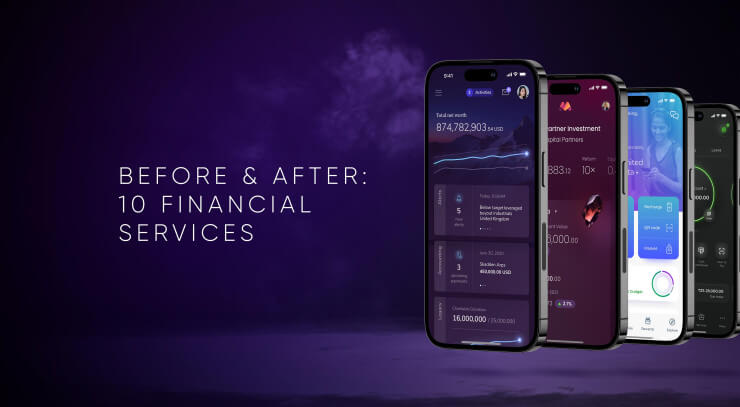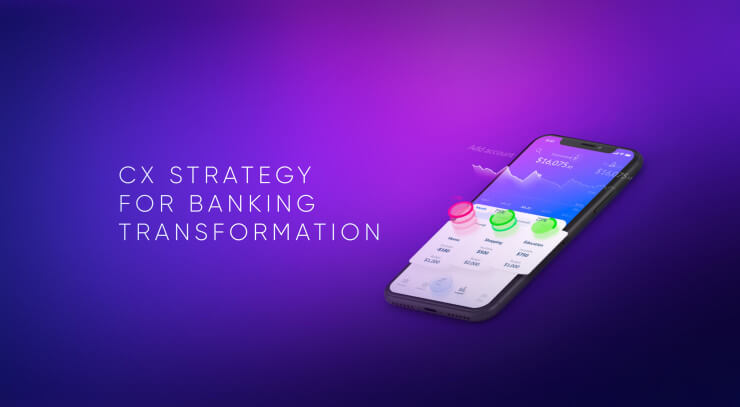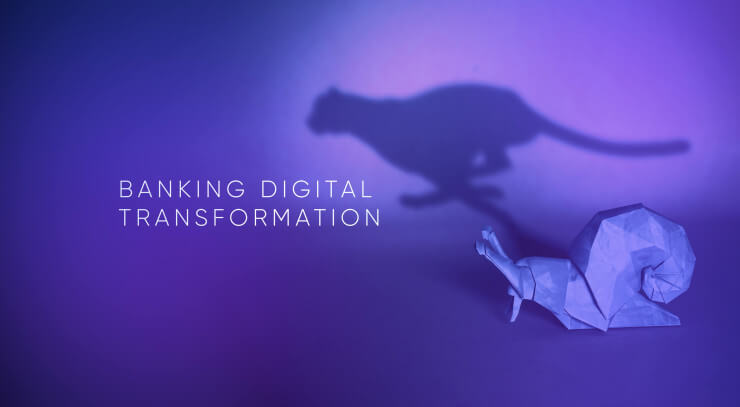In recent years there has been growing discussion on the ability of financial institutions to adapt their services to the expectations of digital-first customers. What should financial businesses consider in order to offer a service that will meet digital banking customer expectations from financial services? Can the banks stay in their domain in the future and design financial products according to banking customers' expectations, or will they be replaced by FinTech companies?
Perhaps, there has never been such a considerable gap. This gap is due to a significant technology boom that formed a digital consumers generation. The digital world has created new behavioral patterns, interaction principles influencing the values of the modern generation.
Digital banking penetration has exceeded branch visits with 75% of the US population using digital channels, according to a study by Insider Intelligence. It is not surprising that financial institutions, organized in the pre-digital era by people from the previous generations, encounter adaptation problems in today’s world. Of course, they still have an army of loyal customers from previous generations, but evidently, digital changes banking customer expectations.
Traditional business survival depends on overcoming the banking customer experience VS expectations gap and on its adaptation to the demands of the digital world.
It is vital to see the difference between the demands of the future customer and the previous generations to create an effective business strategy and also to understand it, taking into account financial UX design.
Digital banking customer expects an adequate level of service that is not inferior to the popular digital services they use on a daily basis:
- Frictionless online banking platform to perform transactions anytime, anywhere, using a variety of devices such as smartphones and laptops.
- Mobile banking apps with a friendly interface that is easy to use and intuitive to navigate.
- Omni-channel options for account access and transactions.
- Quick and efficient responses to customer inquiries and requests, whether through mobile chat, social messengers, or other digital channels.
- Personalized recommendations and services based on individual needs and preferences.
- Integration with popular financial management tools and services, such as budgeting and financial planning tools.
- Advanced security measures to protect personal and financial information with option to use biometric authentication.
- Ability to set up and receive account alerts and different notifications.
- Regular updates and new features to improve the digital banking experience.
- Visually appealing design, with a cohesive look and feel that is delightful and in line with brand identity.
This is a general list, so let's take a look at the most specific expectations in more detail.
Main Banking Customer Expectations From Digital Financial Services
To find out how technology impacts financial products consumption in the digital age we need to explore what the digital generation likes in terms of interaction with companies and take a look at their values and what kind of behavior they have.
1. Fully Digital Consumption
The younger the banking customer, the less he really wants to interact with business representatives to solve his problems when using a product or a service. Their multitasking is shocking. They are able to interact simultaneously with dozens of digital channels. Emails are gone, left only for business communication. Still don’t have notifications in your service app? Well, that’s no good. Don’t hesitate to enable them. Use as many digital channels as possible, be everywhere with your young customers.
They live in a world of innovation. And most of all appreciate the real-time experience. This means that innovative financial services must closely monitor trends and use situational marketing to provide a hyper-personal experience. It’s important to switch finance institutions from traditional advertising to tech native formats.
According to Deloitte global benchmarking study of 318 banks in 39 countries, only 34% of banks implemented fully digital processes (product opening etc.) during pandemics. It’s not as easy to get a complete mobile banking experience, and the app itself could be far from being perfect. Banking must become omni-digital, but carefully. Nothing can be as annoying for banking customer as useless advertising notifications.
Many banks still invest in channels that are ineffective for the new generation. Users wish to make more transactions fully online — from simple payments and transfers to loans and investments.
The implementation of new tendencies doesn’t always correspond with the regulatory requirements of the banking customer identification (KYC) and to the regulations on money laundering may be beyond companies, but the ones who manage to do this, will gain access to a large potential audience and provide a good future for their business. So, get ready for a cashless society.
2. Design Rules the World
Unlike the previous generations, the new generation loves with the eyes, not with the ears. Don't expect a catchy tagline to be an excuse for outdated site design, an ugly app that makes financial service UX (user experience) awful. Visual details and interface interactions are paramount for the new generation.
Preference is given to the visual content and the brands are judged by their taste and the beauty they bring into the users' lives. It also means that visual channels are dominating in user experience (e.g. social media feeds, apps, chats, video blogs, visual mems).
In particular, young people don't like to talk on the phone. Studies show that the younger the target group of users is, the less popular phone communication is. Forrester Statistics revealed significant differences among "Millennials" — 49% of respondents from Generation Y (23-37 years) preferred communication with company representatives on the phone, in contrast to the Generation Z (16-22 years) — 38%.
Still, the Millennials are the most active age group using social media for communication. For example, instead of calling support, the younger generation will look for a tutorial on the Internet or will contact the company online. They’ll be frustrated if they don't find anything of that kind.
3. Total Transparency
This generation is used to sharing private information. Therefore they’ve got a different attitude towards privacy. Easy registration and services with open ID are better for them than time-wasting secured forms. They won’t understand why the provider complicates the usability of the service because of safety standards.
The Millennials really appreciate the quality of the service and they are willing to sacrifice something to obtain a maximum level of service. According to a Salesforce study, 61% of respondents do not mind sharing their personal information with the business, in case it will make product or service interaction both offline and online more personalized. Also, 58% of Millennials said that they are ready to share this information to get more accurate recommendations related to their interests.
This is the obvious difference between the modern banking customer and the previous generations — for example, among the group of baby boomers, i.e. people born in the period 1943-1963 years, only 41% of users would share personal information.
So, you can rely on their data if it will help to improve their lives and make your financial service more useful. But be prepared that this rule also works in the opposite direction. Users expect honesty and transparency from your business. Perhaps, privacy is becoming a relic of the past in the digital world.
4. Authenticity Instead of Loyalty
They don’t stick with brands and are not loyal to them. Why? Because they can find hundreds of the same offers online, evaluate them with ratings and reviews, and choose the most suitable one. Unlike the traditional approach of creating brand value through mass advertising, multiple repetitions, and a unique proposal, in future, the main value of any brand will be its social capital: the number of fans recommending this service and hyping it online.
As a result, instead of market positioning, that usually doesn’t have anything to do with reality, the brand authenticity and its correspondence with the values of selected niches, confirmed in its actions, and also its willingness to build customer-centric relationships, based on the business model, become of utmost significance for the business.
The Millennials don’t need any explanations: they judge everything by their own experience. It is important for them to feel their value to the company. If a young man reckons the business is not careful enough for him, he will go to a competitor. No regrets.
For example, in the Forrester survey, 21% of Generation Z stated that a reason to change the company could be the poor social media support and the lack of functionality of the product, not to mention a bad mobile app (23)%.
Note: the statistics described applies not only to retail companies and start-up services but also to the organizations with which earlier generations have been interacting for years (banks).
The Kasasa study revealed that 82% of Millennials don’t mind changing banks and 83% of them would go to the competitors who offer more favorable conditions (interest rates, cashback, etc.). 65% of the users would choose a more convenient banking mobile app.
5. Disrupting Media
Millennials consume content in a completely different way. Forget about TV and commercials. Become a favorite service of а popular blogger, and no advertising is needed. Create useful content that inspires consumers and they will become your loyal customers and advertising agents (and free of charge).
Today, blogging and gathering a loyal audience is typical for the younger generation. They start making their online communication network from their childhood. So, they are no longer traditional media consumers. They become media themselves.
Young consumers are the most demanding critics, not forgiving brands for arrogance, deceit, and neglect. Their expectations of the minimum level of service often meet the highest quality standards and they do not forgive mistakes. The news of bad service spreads quickly, filling thousands of sites. For any brand this could be the beginning of the end.
In practice, the younger generation doesn't mind speaking publicly about their user experience. According to Accenture statistics, 70% of Generation Z who purchased offline and online, wrote reviews and 40% stated that they do it regularly.
Given the fact, that Millennials are the most active users of social media, it’s unprofitable to upset these customers, because they not only quickly switch to the competitors but also express their discontent publicly.
6. Social Responsibility
They understand the meaning of life and they are therefore more focused on human values. And at the same time, they are incredibly pragmatic. This means, they will not swallow the brand’s promises - they are keen on certain actions: here and now. Actions that change the world for the better.
Empty marketing promises do not work here - brands will have to answer for their words and to show the meaning of their existence. It may seem surprising, but the new generation is aware that they are guests on this planet, and looking for responsive service.
They are aiming at not just saving the planet for future generations, but also at improving it. The financial institutions that don’t share these values have no place in the future. If you still haven't become “a green company” - do it.
7. Expecting a Dialogue
With social networks, communication has become a primary activity for young users. They are in constant interaction with each other through digital channels. This means that the brands of the future should be open for dialogue. They can't expect that cooperation will remain unilateral, as in "take it or leave it".
Younger users are used to the fact that their opinions are heard. The willingness to dialogue is becoming the hallmark of today’s service. Consultations about complex products are really important. The feedback, properly collected, and processed becomes a valuable source of business insight for development and improvement.
Amazing Opportunities for Financial Design
Analysis of the 7 main banking customer expectations from digital financial services of both Millennials and Generation Z allows us to gather some advice on the financial product design for the digital-native audience.
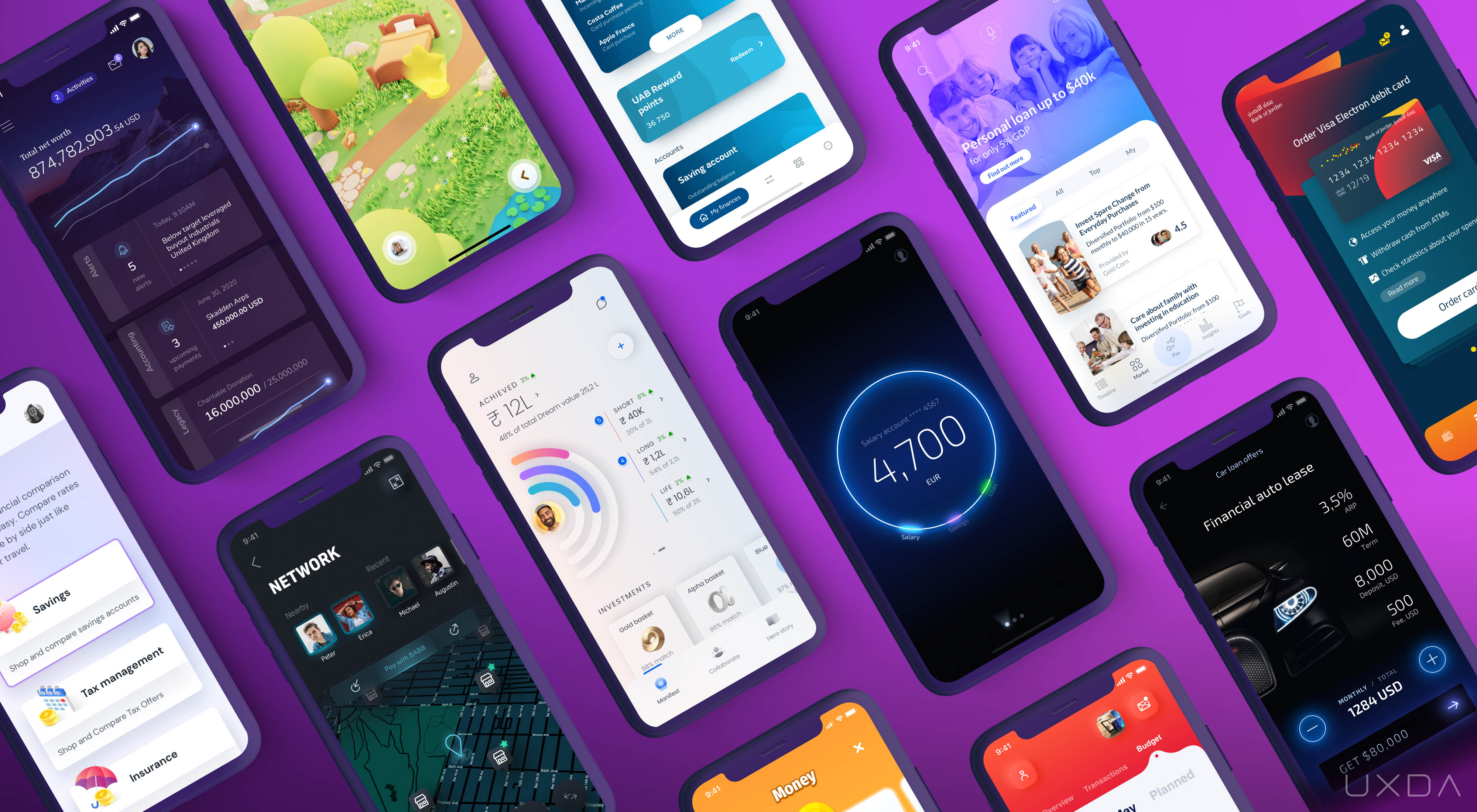
1. Reorientation of Business Processes on Digital - to Reduce Costs
Nowadays digital customers in banking are increasingly impacting on business. Millennials and Generation Z will soon take a lot of resources into their hands, becoming important customers for financial business.
Their preferences are quite different from their parents' ones, and the banking industry should switch from conservative to digitally disruptive. Some banks are still reticent towards digitalization, preferring to invest in the improvement of the old business processes. Meanwhile, outdated working methods and values like "a wide network of branches" are now not only unprofitable for the company but also pulling the business down.
Ultimately, it is a question of money — according to PWC calculations, the average cost of a single transaction in offline branches is $4, while online and mobile banking are respectively $0.09 and $0.19 per transaction.
2. Omni-Digital is the New Black
Currently, the development of financial UX and the marketing of most financial companies are guided by the so-called "omni-channel" customers, i.e. those who use online banking, visit the office, visit the site, call support. According to PWC, the number of such banking customers has significantly decreased in recent years, especially during pandemics.
There is a growing number of "omni-digital" customers who do not use physical communication channels, like going to a bank or call center. Instead, they use only digital channels to solve their financial tasks.
This means that to attract the millennials, the modern bank should engage customers not only by its own resources, like apps or websites but also by the platforms, that are typical to customers, such as GAFA (Google, Apple, Facebook, Amazon).
Digital customers could care less about the safety of their personal data; they are willing to share it in order to get more convenient service. But it is not enough just to gather information, it also needs to be properly processed. The promising domains here are the use of machine learning technology, artificial intelligence in banking, and predictive analytics approaches.
Using these tools, it’s possible to conduct instant scoring and automatically respond to the loan application, or even offer it at the best moment, using digital channels.
You can offer services and products based on a particular banking customer spending - a credit card with favorable conditions of purchasing abroad for frequent travelers. Insurance can be automatically offered to someone who’s just bought a car. This use of new financial services technology will enrich the banking user experience and raise banking product design to a new level.
3. Outstanding Experience Creates Value
Interviews show that it’s crucial for the millennials to feel important as customers and not just a figure in the bank financial reports. All aspects of the interaction between the finance company and the banking customer should aim at better relationships.
Customers’ impressions and experiences from financial services are essential aspects of every modern business. Not only online. The full banking customer journey should be thought out to the finest detail.
Even if a bank closes all the branches except the main office, it needs to create the right atmosphere there. For the new generation, cheap furniture, electronic queue, or in opposite - pretentious tables of precious wood with consultants in gold-rimmed glasses and heavy coats, would be seen as quite odd. They would prefer a trendy coffee shop or coworking space — places that are more suitable for good and easy communication.
The design of every touchpoint in the banking customer experience must be verified and justified according to the peculiarities of clients. Every detail of the banking product has its value and must be properly designed.
Design is no longer a way to create banking product packaging, nowadays design is a way of thinking and providing competitive advantages.
You need to be careful of the customers’ expectations in digital banking, taking into account perception patterns before implementing them into your digital financial service. It’s the only way traditional businesses can create something valuable for their customers and survive in the age of disruption.
Conclusion: The Financial Solution Needs to Be Built Around the Customer
Digital customers are extremely important for banks because they can help banks expand their customer base, improve customer retention, increase efficiency, and improve their competitive position. But in order to win customers from the digital generation, transferring the activity into the digital world is not enough for the financial institution. Businesses need to put the customer in the center of their processes and ecosystem and double their efforts in ensuring the highest quality service and a reliable, personalized, and pleasant user experience.
In our world where a customer can order a meal, book a ticket to a distant country, call a taxi, and request maid service in a couple of clicks or taps on a smartphone, banks should not stay behind in the service level. There are already a lot of Fintech startups offering a variety of digital financial solutions, from quick loans, and remittances to investments. They are designed in an intuitive format for digital users.
Young people are open to the world: they prefer to spend money on impressions, not on things. They are searching for convenience. In the coming years, winning customers will become the driving-force of the global economy. This will be a successful task for the companies who have a better understanding of the digital customers expectations from banking and are able to design financial services which provide an outstanding user experience.
Additional answers that might be helpful:
What are the main technologies to meet digital customer expectations from a bank?
Digital customer expectations from banks have evolved significantly with the rapid advancement of technology. Today, customers expect a seamless and convenient digital experience from their banking institutions and banking innovations could help:
1. Mobile Banking Apps
User-Friendly Interface: Customers expect intuitive and user-friendly mobile banking apps that are easy to navigate.
Functionality: Comprehensive functionality within the app, including account management, fund transfers, bill payments, and mobile check deposits.
2. Online Account Access
24/7 Accessibility: Customers expect to have access to their accounts and banking services 24/7, allowing them to check balances, review transactions, and perform various transactions at any time.
3. Security and Privacy
Robust Security Measures: Customers demand strong security features, such as two-factor authentication, biometric authentication (fingerprint or facial recognition), and encryption, to ensure the safety of their financial information.
Privacy Protection: Assurance that their personal and financial data will be kept confidential and protected from unauthorized access.
4. Digital Payments
Contactless Payments: The ability to make contactless payments through various channels, including mobile wallets, contactless cards, and other emerging payment technologies.
Peer-to-Peer (P2P) Transfers: Seamless and quick P2P money transfers between accounts.
5. Personalization
Tailored Services: Customers expect personalized banking experiences, with services and product recommendations based on their financial behavior and preferences.
6. Customer Support
Digital Channels for Support: Access to customer support through digital channels, including chatbots, online messaging, and email, for quick issue resolution.
Real-Time Assistance: Expectation for timely responses and real-time support.
7. Integration with Third-Party Services
Open Banking: Integration with third-party financial services and apps, allowing customers to manage various aspects of their financial lives in one place.
8. Digital Onboarding
Efficient Account Opening: A streamlined and efficient digital account opening process, minimizing paperwork and the need for in-person visits.
9. Notifications and Alerts
Proactive Communication: Regular updates, alerts, and notifications about account activities, potential fraud, and relevant promotions or offers.
10. Technological Innovation
Adoption of Innovative Technologies: Customers expect banks to leverage emerging technologies, such as artificial intelligence, machine learning, and blockchain, to enhance their services and offer innovative solutions.
Read more about next-gen UX in banking innovation >>
Why is customer experience important in banking?
Customer experience is crucial in banking for several reasons, and its importance has only increased in the digital age. Here are key reasons why customer experience matters in the banking industry:
- Customer Retention. Positive customer experiences contribute to customer loyalty and retention. When customers have a satisfying and seamless experience with a bank, they are more likely to stay with that bank for the long term.
- Competitive Advantage. As the banking industry becomes more crowded and competitive, providing an exceptional customer experience can serve as a significant differentiator. Banks that prioritize customer satisfaction gain a competitive edge over those that do not.
- Customer Acquisition. A positive reputation for customer service can attract new customers. Word-of-mouth recommendations and online reviews play a significant role in the decision-making process for individuals seeking banking services.
- Trust and Credibility. Building trust is fundamental in the banking sector. A positive customer experience fosters trust and credibility, which are critical elements in establishing and maintaining customer relationships.
- Reduced Customer Churn. When customers have a negative experience, they are more likely to switch to another provider. Focusing on customer experience helps reduce churn by addressing issues promptly and ensuring customer satisfaction.
- Brand Image and Perception. The way customers perceive a bank is heavily influenced by their experiences. A positive customer experience contributes to a favorable brand image, while negative experiences can harm a bank's reputation.
- Cross-Selling and Up-Selling Opportunities. Satisfied customers are more likely to consider and accept additional products or services offered by the bank. A positive experience can open up opportunities for cross-selling and up-selling, leading to increased revenue for the bank.
- Cost Savings. Investing in a positive customer experience can result in cost savings in the long run. Satisfied customers are less likely to require extensive support, file complaints, or engage in costly dispute resolution processes.
- Adaptation to Changing Customer Expectations. Customer expectations are constantly evolving, particularly in the digital age. Banks that prioritize customer experience are better equipped to adapt to changing expectations and embrace new technologies, staying relevant in the market.
- Feedback for Improvement. Monitoring and analyzing customer feedback and complaints provide valuable insights for continuous improvement. Banks can use this feedback to identify areas of weakness and implement changes to enhance the overall customer experience.
Get UXDA Research-Based White Paper "How to Win the Hearts of Digital Customers":
 If you want to create next-gen financial products to receive an exceptional competitive advantage in the digital age, contact us! With the power of financial UX design, we can help you turn your business into a beloved financial brand with a strong emotional connection with your clients, resulting in success, demand, and long-term customer loyalty.
If you want to create next-gen financial products to receive an exceptional competitive advantage in the digital age, contact us! With the power of financial UX design, we can help you turn your business into a beloved financial brand with a strong emotional connection with your clients, resulting in success, demand, and long-term customer loyalty.
- E-mail us at info@theuxda.com
- Chat with us in Whatsapp
- Send a direct message to UXDA's CEO Alex Kreger on Linkedin


